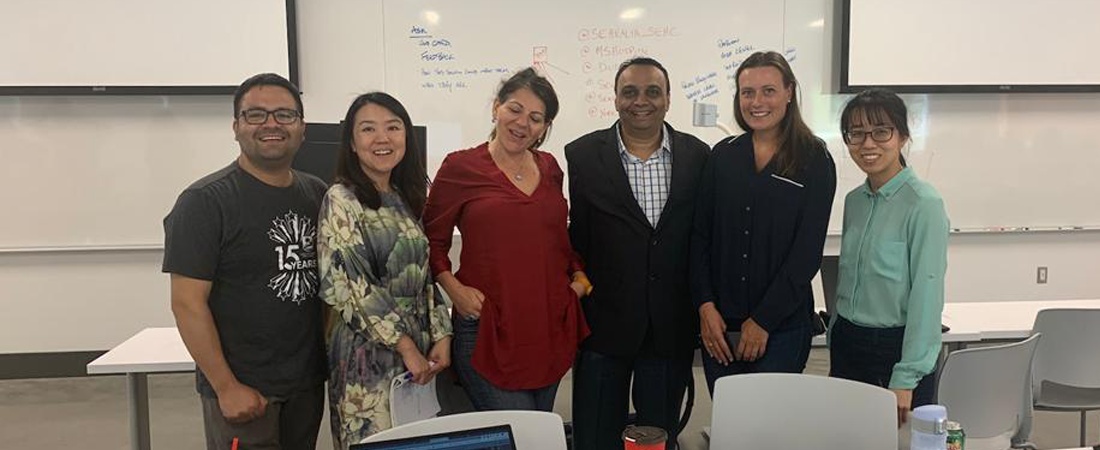Stany Castillo has been working for many years in the Peruvian market, commercializing and finding a way to bring new and advance technology to some labs in Latin America. Scientific researches in universities require a lot of support, InnScience is putting together a solution bringing that support to those in need for cutting-edge technology. Canada was the best place for him to create bridges and commercialize technology for labs in the Pacific Alliance.
InnScience was part of the fifth cohort of LatAm Startups in Toronto and currently are part of the Helix program at Seneca.
How was InnScience created?
I created InnScience because I saw a need in the market. When I graduated from my biology studies in Peru, many of my classmates started working and they needed to buy equipment for their research. I was in Lima, and I was able to be in contact with suppliers and started sourcing them. It was the that I saw the opportunity in the market to buy and sell the scientific equipment. We created InnScience and import equipment from all over the world, consolidate them in Miami and ship the products to Peru.
How has the company grown since you moved to Canada?
The business has been growing at an average rate of 35% yearly, and that was why I decided to come to Canada last year to explore the possibilities of growing here. More than 85% of the imports come from North America, mostly US. However, Canada is an option as it is located in a logistic route, so it is possible to develop consolidation plan here.
Once I came and started working with LatAm Startups in their softlanding program, it was eye-opening. It was interesting because here, you do not start buying and selling. Instead, we need to take time to think about the problems and finding a solution to the market. Currently, for my company, the only constant is change.
Here is what I realized the problem for my industry: Researchers spend copious amount of time finding and connecting with suppliers and dealing with logistics and customs, and it is frustrating not to have the support when the products came damaged or defective. All of this takes away research productivity. My partner and I decided to look into the different research process stages, and we knew that research productivity are affected by how efficient we perform at these stages. The first stage is the planning, second is sourcing, third is statistics and fourth is publications. Therefore, we decided to make a huge change to InnScience’s business model.
InnScience’s old business model was to focus helping researchers in the sourcing stage. Now, we want to support researchers by helping them improve their research productivity in all stages of the research process. For example, in planning stages, we provide them access to the best applications/software available to make their job more efficient, such as bibliography management and searching for papers, or researchers in a community worldwide. For the sourcing stage, we are thinking of using membership model, in which we can give them lower prices for their equipment and materials. They will also have access to the best statistics software, which will be included in the InnScience membership. We would like to offer to them everything integrated in a platform, I believe that we will be able to help them tremendously in the productivity sector. All the data that we will be able to collect in the future will be important to see what researches have been done, what type of statistics they were using, which equipment they bought, their main issues with the equipment, which journal they prefer for publishing, etc, which will be beneficial for important for other companies in the future.
We are facing new challenges, as we are improving much of our business model.

Why Canada?
I chose Canada because it’s a country open for entrepreneurs from other countries and supports us. The ecosystem and entrepreneurial environment are very supportive. Its geographical location is also similar to the US, which is where most of my imports come from. We have direct access to the main cities in countries such as Peru, Colombia, Chile and Mexico.
When I was in Peru, with the emerging countries, there are limited resources. Hence people are more focused on making the best of the day. Being in a developed market here in Canada, there are more resources available for us. We have more time to think about the global problems and how you can create a new strategy that could be more disruptive and create much more value. The environment here is perfect for people that wants to create innovation and challenge the status quo.
What are your current projects?
We are now part of the Seneca Helix Accelerator Program, which will be helpful for us to have access to resources Seneca has. We are starting the Helix Summer Institute, working with IBM, the North York regions, and hospitals. We are also in contact with Ryerson University right now.



